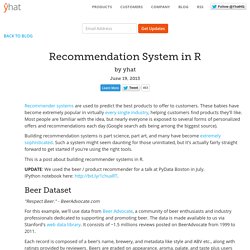

The Timescale of Life. Tree of Life. A History of the English Language - Elly van Gelderen - Google Books. LOOPY: a tool for thinking in systems. GDPR: Getting the Board on Board. In my last article for Digital Guardian, I discussed the incoming General Data Protection Regulation (GDPR).

I looked at what it is, why it matters and some of the key issues with regards to building compliance. I acknowledged that, as highlighted by (ISC)2, one of the biggest challenges is securing senior-level support (and the budget that goes with it) for GDPR projects. In this article, I will address some of the reasons why getting the board to engage with GDPR might be proving difficult and what you can do to communicate more effectively with the senior level.
Although focused primarily on securing more engagement with GDPR, these issues are psychological, sociological, organisational and cultural. This is not about legal or technical factors; this is about communication. References to GDPR are everywhere at the moment. The first step in getting the board to engage with your GDPR project is to think strategically. Ditch Cable with a DIY HDTV Antenna. Turn the base over, and use two screws to connect each of the disposable grill trays to the back of the antenna.

These will act as a reflector, sending the signal back to our antenna. Next, join the V sections together with wire. This should be criss-crossed on the top and bottom sections, and run straight along the middle. Use the photo below as a guide. Notice how I’ve stripped a segment of insulation from the two middle wires. Http. TIMELINE - Cultural Broadcasting Archive. Meetup Recap: Introductory D3 Workshop. A benchmark comparison of Node.js, Tornado, and 3 Erlang servers. The author emphasizes the first picture (which shows Misultin delivering 3X the throughput of a Node.js server), but I think the most interesting picture is the Response Times (picture #3).

Look at the purple and yellow lines. When Node.js starts overloading at 3000 reqs/sec, the average response time drops to ~300 ms (just guessing, I'm not good at reading log graphs). But when Mochiweb starts overloading at 5000 reqs/sec, the average response time is around ~50ms. In other words, the slowest of the Erlang servers has twice the throughput of Node.js, and handles server overload much more gracefully (at least in this contrived example). This should just fall under the 'duh' category. However, choosing a tech is much more than just raw numbers. That being said, we did something similar about 2 years ago and Erlang/Riak came out so far ahead of the competition for our needs and it wasn't even close. I did go back to my notes just recently and looked again with Node in mind.
I agree. The Ipe extensible drawing editor.
Systems Concepts; the solution to complex problems. Sage: Open Source Mathematics Software. Recommendation System in R. Recommender systems are used to predict the best products to offer to customers.

These babies have become extremely popular in virtually every single industry, helping customers find products they'll like. Most people are familiar with the idea, but nearly everyone is exposed to several forms of personalized offers and recommendations each day (Google search ads being among the biggest source). Building recommendation systems is part science, part art, and many have become extremely sophisticated. Such a system might seem daunting for those uninitiated, but it's actually fairly straight forward to get started if you're using the right tools. This is a post about building recommender systems in R. UPDATE: We used the beer / product recommender for a talk at PyData Boston in July. Beer Dataset "Respect Beer. " - BeerAdvocate.com For this example, we'll use data from Beer Advocate, a community of beer enthusiasts and industry professionals dedicated to supporting and promoting beer.
Quality You Can Rely On. EpicDecide: Cool Group Decision Making Tool. Normally websites that let you form group polls and voting pages do nothing more than collect the votes and provide you with the results.

The voting results by themselves do not reveal voting confidence, agreement, and passion. These informative factors are covered by a web service called Epic Decide. Epic Decide is a free to use group decision making service that lets you create online voting pages. You can pose a question, provide options, and then specify what kind of option is to be voted on. Visitors to the voting page can indicate their choice by assigning each option a score out of 5 stars. Epic Decide then analyzes all the votes and shows you the selected star scores for each voter. Features: Check out Epic Decide @ www.epicdecide.com.
Gb8. Game Theory. Semantic technologies.